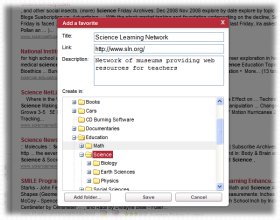|
Education
Web
Viewing 1-3 of 3 total results
role of the United States in world affairs after World War II. 11.5 Students analyze the major political, social, economic, technological, and cultural developments of the 1920s. 1. Discuss the policies of Presidents Warren Harding, Calvin Coolidge, and Herbert Hoover. 2....
1
0
role of the United States in world affairs after World War II. 11.5 Students analyze the major political, social, economic, technological, and cultural developments of the 1920s. 1. Discuss the policies of Presidents Warren Harding, Calvin Coolidge, and Herbert Hoover. 2. Analyze the international and domestic events, interests, and philosophies that prompted attacks on civil liberties, including the Palmer Raids, Marcus Garvey’s “back-to-Africa” movement, the Ku Klux Klan, and immigration quotas and
56
0
http://www.cde.ca.gov/be/st/ss/documents/histsocscistnd.pdf#page=56
www.cde.ca.gov/be/st/ss/documents/histsocscistnd.pdf#page=56
role <span class="highlight">of</span> the United States <span class="highlight">in</span> world affairs after World War II. 11.5 Students analyze the major political, social, economic, technological, and cultural developments <span class="highlight">of</span> the 1920s. 1. Discuss the policies <span class="highlight">of</span> Presidents Warren Harding, Calvin Coolidge, and Herbert Hoover. 2. Analyze the international and domestic events, interests, and philosophies that prompted <span class="highlight">attacks</span> on civil liberties, including the Palmer Raids, Marcus Garvey’s “back-to-Africa” movement, the Ku Klux Klan, and immigration quotas and
Nebraska Social Studies/History Standards 33 12.4.5 Students will analyze the regional development of Asia, Africa, the Middle East, Latin America, and the Caribbean, such as physical, economic, and cultural characteristics and historical evolution f rom 1000 A.D. to the present. Exam...
1
0
Nebraska Social Studies/History Standards 33 12.4.5 Students will analyze the regional development of Asia, Africa, the Middle East, Latin America, and the Caribbean, such as physical, economic, and cultural characteristics and historical evolution f rom 1000 A.D. to the present. Example Indicators: � Analyze the patterns and networks of economic interdependence, e.g., formation of multinational economic unions; international trade; the theory of competitive advantage; job specialization
34
0
http://www.nde.state.ne.us/SS/DOCUMENTS/TheHistory-SocialStudiesStandardsPDF.pdf#page=34
www.nde.state.ne.us/SS/DOCUMENTS/TheHistory-SocialStudiesStandardsPDF.pdf...
Nebraska Social Studies/History Standards 33 12.4.5 Students will analyze the regional development <span class="highlight">of</span> Asia, Africa, the Middle East, Latin America, and the Caribbean, such as physical, economic, and cultural characteristics and historical evolution f rom 1000 A.D. to the present. Example Indicators: � Analyze the patterns and <span class="highlight">networks</span> <span class="highlight">of</span> economic interdependence, e.g., formation <span class="highlight">of</span> multinational economic unions; international trade; the theory <span class="highlight">of</span> competitive advantage; job specialization
wheel, agriculture, iron tools, governmental structures, city-building, art and architecture, writing, textile production III. WORLD HISTORY B. Classical Civilizations and World Religions 1000 BC - 600 AD The student will describe classical civilizations in Africa, Asia, and Mesoameric...
1
0
wheel, agriculture, iron tools, governmental structures, city-building, art and architecture, writing, textile production III. WORLD HISTORY B. Classical Civilizations and World Religions 1000 BC - 600 AD The student will describe classical civilizations in Africa, Asia, and Mesoamerica. 1. Students will describe the emergence of states in Sub-Saharan Africa and explains how iron working diffused in Africa. 2. Students will describe how the Chinese Empire was united. 3. Students will analyze the relationship
25
0
http://education.state.mn.us/mdeprod/groups/Standards/documents/LawStatute/006219.pdf#page=25
education.state.mn.us/mdeprod/groups/Standards/documents/LawStatute/00621...
wheel, agriculture, iron tools, governmental structures, city-building, art and architecture, writing, textile production III. WORLD HISTORY B. Classical Civilizations and World Religions 1000 BC - 600 <span class="highlight">AD</span> The student will describe classical civilizations <span class="highlight">in</span> Africa, Asia, and Mesoamerica. 1. Students will describe the emergence <span class="highlight">of</span> states <span class="highlight">in</span> Sub-Saharan Africa and explains how iron working diffused <span class="highlight">in</span> Africa. 2. Students will describe how the Chinese Empire was united. 3. Students will analyze the relationship
27
0
http://education.state.mn.us/mdeprod/groups/Standards/documents/LawStatute/006219.pdf#page=27
education.state.mn.us/mdeprod/groups/Standards/documents/LawStatute/00621...
Minnesota Department <span class="highlight">of</span> Education May 15, 2004, 9:45 p.m. 27 III. WORLD HISTORY G. Western Civilizations, Age <span class="highlight">of</span> Revolution and Reaction, 1640- 1920 <span class="highlight">AD</span> The student will demonstrate knowledge <span class="highlight">of</span> the rise <span class="highlight">of</span> colonialism and its effects worldwide. 1. Students will examine the effects <span class="highlight">of</span> imperialism on the colonial societies <span class="highlight">of</span> the 18th, 19th and 20th Centuries. 1. Imperialism, mercantile economies; policies <span class="highlight">in</span> Africa, Asia, America; social consequences, slave trade WORLD HISTORY GRADES 9-12 Strand Sub-Strand
|
